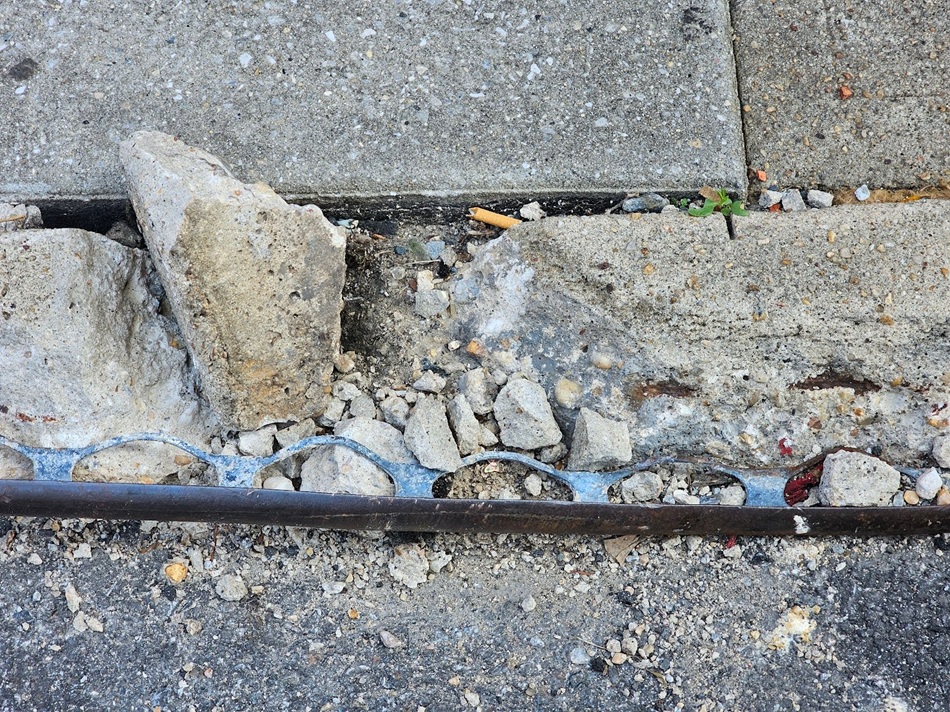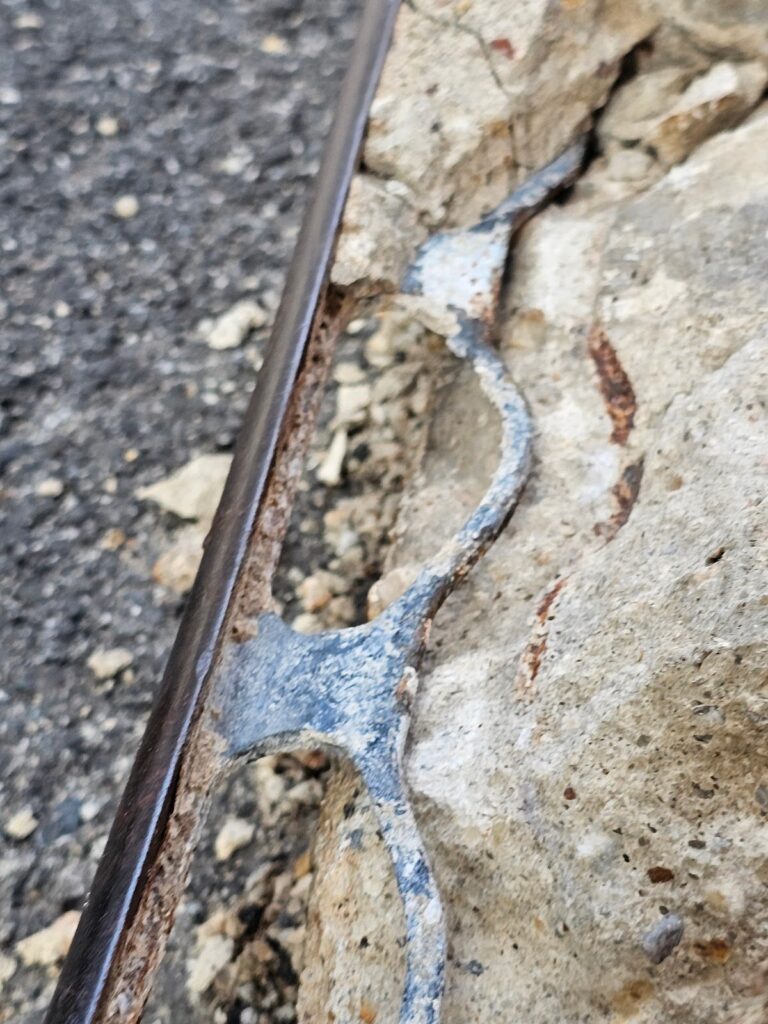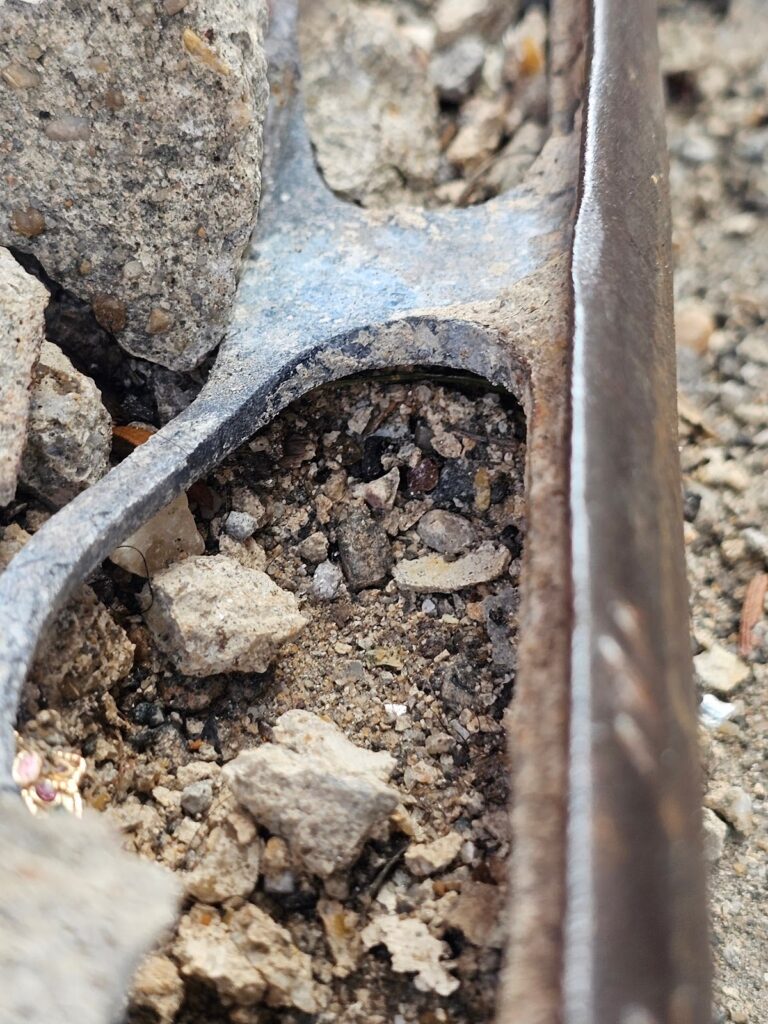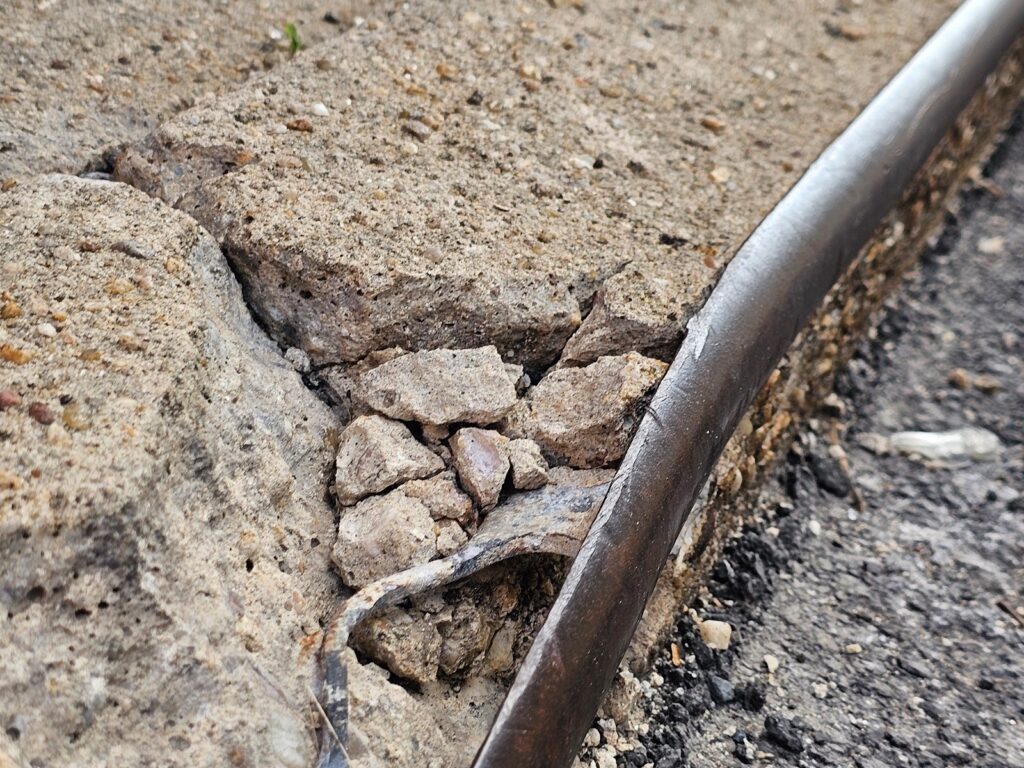Advanced Steel Nosings at Concrete Treads and Curbs – Part II
This past week, we looked at a few pictures discussed a type of concrete steel-nosing that is exposed to the surface but also partially embedded in the concrete itself and intended to help protect the most susceptible or sensitive part of the concrete curb. That sensitive area is where the vertical edge of the curb meets the horizontal flat surface, at a right angle. That area is sensitive because it bears the most impact of both foot traffic and vehicles, but also because it is the weakest part, both with lower compressive strength resistance from its surroundings and a lower inherent tensile strength to resist which structural loads and forces that applied upon it.
One of the most common types of chemical elements that destroys concrete and masonry is snow melt type salt used to deter or prevent ponding water or precipitation on a walkway surface from freezing and creating ice slicks. Some people use salt to just make shoveling easier, but it doesn’t help much. In fact simply shoveling, without the salt, is the best thing to do, in most cases. Often though, people can’t consistently shovel throughout a long slow snowfall. In those cases, it might be useful to apply a covering of salt to prevent pedestrians are building occupants from slipping as snow continues to fall or precipitation continues.
This particularly applies when the ground cover is slightly warmer during daytime hours and causes snow or icefall to melt and then allows it to refreeze again after temperatures drop a bit, generally overnight or after dark. We highly recommend against application of salt where there are historic or sensitive types of concrete or cementitious materials applied though. Salt can greatly increase the amount of typical wear and deterioration. As salt infiltrates into the porous surface of concrete and masonry, it causes crystallization or crystal formation which can break down the concrete and brick and mortar type materials.

In addition to the type of chemical damage that most concrete surfaces, here in our region of Washington DC, are exposed to, there’s also additional types of risk or threat to concrete which causes and accelerates breakdown and deterioration. One of those causes is a very obvious threat of impact from traffic and heavy vehicles. At the side alleys or edges of these buildings, one of the biggest threats is heavily loaded trash trucks. They run through the side streets and alleys almost every single week or more, here in Washington DC. Depending on the neighborhood, trash pickup might happen twice per week.
The materials used to make concrete are not very different to the materials that we commonly use for masonry construction. Especially modern masonry construction. Technically there are a few important differences between historic masonry and modern masonry and the constituent substrate materials. In doing repointing or brick pointing or tuck pointing, especially with historic buildings, we will generally use a lime mortar. In some cases, concrete was made, in historic times, using materials very similar to the lime mortar used in historic brickwork, here in Washington DC. In most cases though contemporary or modern concrete is different because it uses portland cement instead of a lime-based cement.

When a heavy vehicle hits these edges, it has a high probability of causing structural damage or breakage because the concrete lacks inherent tensile strength to resist such impact, particularly at that nosing. The nosing is one of the few parts of the concrete that doesn’t have an ability to have inherent tensile resistance. Other parts of a concrete walkway, such as the most common and typical walking surface, the flat planer surface of the concrete, with good compaction will have continuous compressive strength.

Good subgrade compactions are extremely important for this compressive strength to work properly because without a highly compacted and consistently prepared substrate, there can be weak spots in the substrate which debilitate the compressive strength and turn what would otherwise be a compressive gorce into a tensile force which allows for separation.

In other words, when concrete has pockets of weak substrates below, the area of transition between strong subgrade and weak subgrade will become a fulcrum point that will actually bend or allow the concrete to separate at the upper top horizontal edge as the shape changes to an angle pressed downward by the force above.
Tensile strength could resist that type of force, but here even though compressive strength is typically inherent characteristic of concrete, tensile strength is not. Generally, structural rebar can be installed to provide additional tensile strength, but heavy rebar is generally not installed in sidewalks because sidewalks are intended for pedestrian traffic only. It’s only by mistake or error that trash trucks run over the edges of these sidewalk curbs.

Our company, Dupont Tuckpointing and Masonry, specializes in masonry restoration, historic brick repointing, and tuckpointing services in the Washington D.C. area. These buildings are uniquely historic, and their preservation requires skilled masons who are technically trained in the best practices and knowledge of proper restoration techniques.
We understand the significance of maintaining the architectural integrity of these historic structures, and our team of experienced professionals is dedicated to delivering exceptional craftsmanship. Whether you require masonry restoration, tuckpointing, or brick repointing services, we are here to help.
At Dupont Tuckpointing and Masonry, we take pride in our work and strive to ensure that every project is executed with the utmost care and attention to detail. We are committed to preserving the rich heritage of Washington D.C.’s built environment for generations to come.
If you have any questions or needs regarding masonry restoration, historic brick repointing, or tuckpointing services, please do not hesitate to reach out to us. We would be delighted to assist you and provide you with the expertise and quality workmanship that your historic property deserves.
You can reach us by telephone at (202) 796-7644 and you can reach us by email from the contact form on our website at https://duponttuckpointingmasonrydc.com/contact-us/




